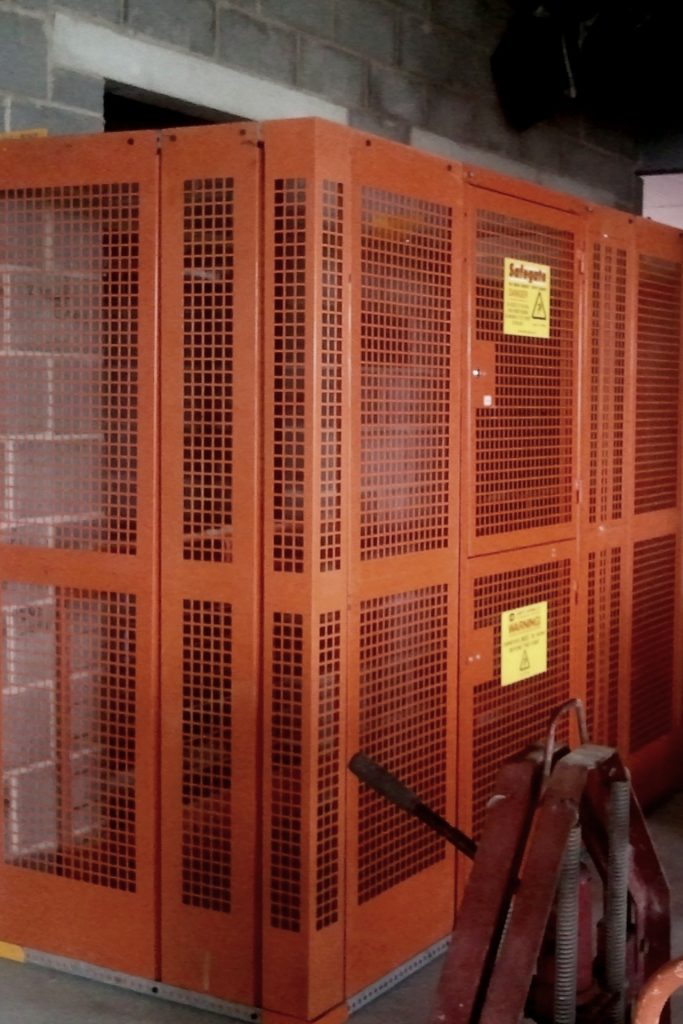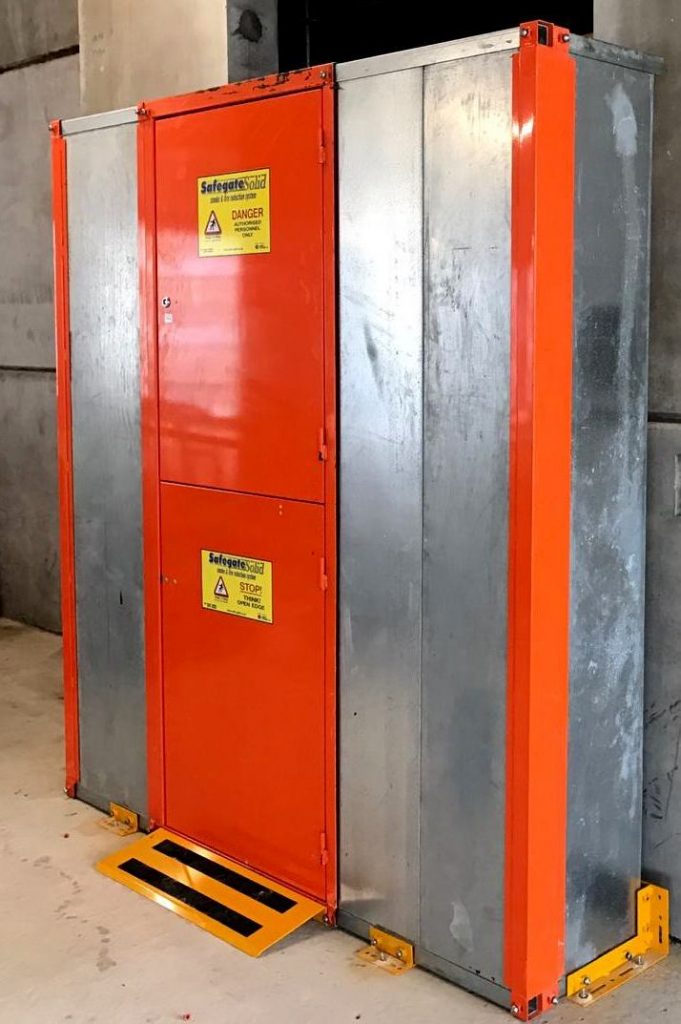Installing a safety gate as a risk control measure while working in lift shafts is essential to protect onsite personnel. When employees work at height, hazards are a central concern to ensure the prevention of accidents for the duration of a project’s completion.
But what are the risks of working at heights? Why is installing an industrial lift shaft safety gate an invaluable protective measure? And how can you identify a safe, legally compliant lift shaft safety gate? These are the questions we answer in this article.
.

What are the risks of working at height?
The risks of working at height could be as minor as trips and slips, or as major as fatalities. Many of these hazards are a result of human error, but issues with your edge protection or fall arrest equipment can also be blamed. So, what are the risks of working at height?
Falling
Of the work-at-height hazards we detail in this article, falling is by far the most common. Despite the rate of fatal injury decreasing each year, falling while working at height accounts for 24%-30% of fatal work-related accidents.
These fatalities have occurred from falling from ladders, platforms, stairs, roofs, and scaffolding, to name a few. Many of these incidents could have been prevented with the relevant edge protection.
Falling can occur as a result of unstable platforms, unguarded openings, poor edge protection, and inadequate risk assessment. The vitality of a thorough risk assessment cannot be emphasised enough.
Dropping equipment
The kinetic energy a falling object generates could be enough to cause serious injury or fatalities, depending on the size and weight of the item, as well as the height from which the object falls.
Industrial equipment and building materials used on a construction site can inflict substantial damage if dropped from a platform of any height. So it is essential to implement protection measures to prevent this.
Lack of experience
There are risks of working at height for employees of any skill and experience level. But those who aren’t knowledgeable about how to identify work-at-height hazards may unintentionally put themselves and others in dangerous situations.
This is why thorough training should be conducted regularly to ensure those on-site know how to stay safe.
.
Why should you install a lift shaft safety gate?
A lift shaft safety gate will offer unmatched protection against the risks of working at height, and provide employees a defence from avoidable falls, injuries and fatalities.
A lift shaft safety gate is the most sturdy form of edge protection you can implement, requiring two actions to gain access, and staying securely in place while your employees are working.
These safety gates minimise the necessity for fall arrest equipment and are faultlessly reliable as a sole hazard control measure.
Furthermore, a safety gate can be secured to any type of surface, including timber, concrete, brick, block-work, steel and even glass. So no matter what your requirements are, the Safegate can be installed.
How can you identify a legally compliant lift shaft safety gate?
A legally-compliant Safegate will adhere to BS EN standards. The BS EN standards are developed by industry experts with influence from stakeholders and consumers to maximise safety and sustainability for their products.
There are over 100,000 BS EN standards in place for products across all industries, but only a few apply to safety gates. These are BS EN13374 and A1:2018, which specify the manufacturing requirements and testing methods for temporary edge protection systems.
Your lift shaft safety gate supplier should be willing to provide you with information concerning BS EN standards and how their products comply with them. If this is not the case, there is no guarantee that your safety gate is approved for use.

What can we do for you?
Here at Safegate we supply, install and remove Safegates for construction and lift companies across the UK. We also provide training for self-installation for the Safegates.
Our Safegates exceed BS EN13374 Class A standards and are available for hire for as short or long a period as you need them.
Contact us now to find out more about our lift shaft edge protection, and protect your employees from the risks of working at height.
